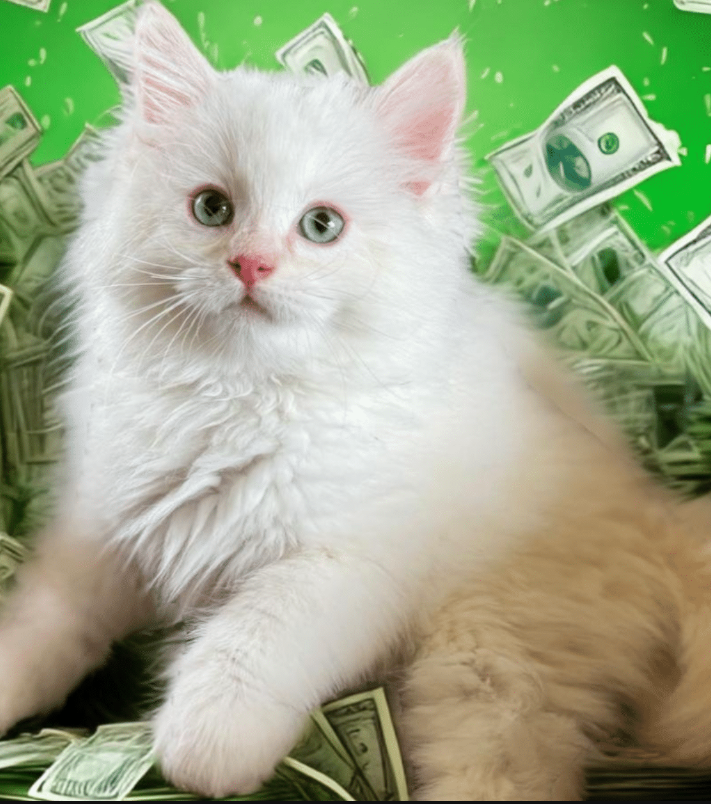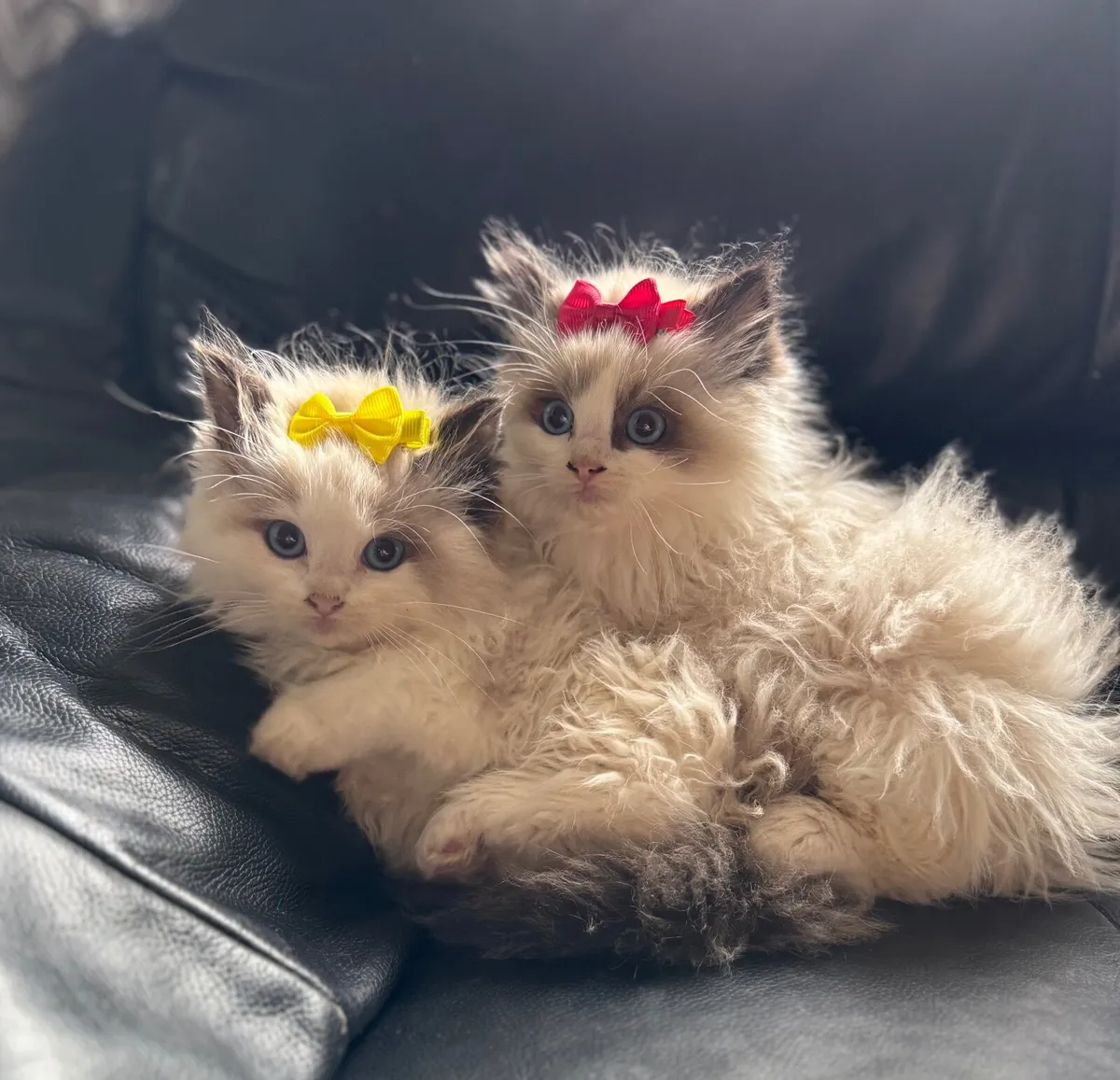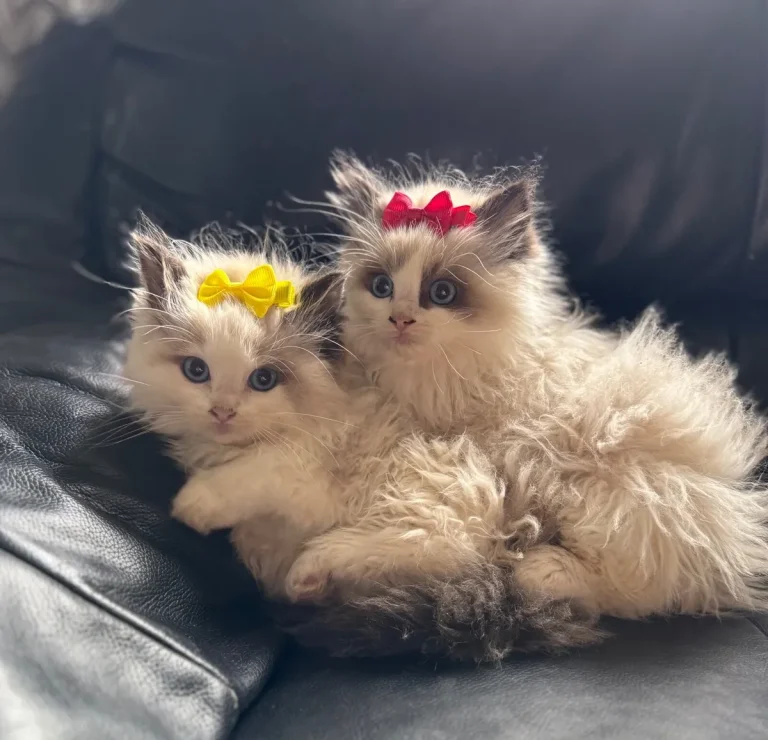Why Are Ragdoll Cats So Expensive? A Breeder Explains the Real Costs
Why are Ragdoll cats expensive? If you’re thinking about bringing home a Ragdoll kitten or even stepping into the world of breeding you’ve probably noticed the price tag is… substantial. These fluffy, dog-like beauties are adored around the world, but that demand is only one small part of the equation.
Ragdolls are expensive because they are a relatively new and highly sought-after breed, but the real reason comes down to what it takes to responsibly breed healthy, well-socialised, pedigreed kittens. Behind every “cute kitten photo” is a long list of costs, risks, and responsibilities that most people never see. Let’s break down exactly where your money goes when you buy a Ragdoll and why good breeders don’t get rich doing it.
Top 5 Reasons Why Ragdoll Cats Are So Expensive
- Breeding Rights & Reputable Lineage Are Not Free
- Buildings, Equipment & Supplies Add Up Quickly
- Loss Prevention & Medical Care Are Costly
- Labour, Time & Caregiver Compensation
- Administrative & Exhibition Costs
1. Breeding Rights & High-Quality Lineage
If you’re buying a Ragdoll to breed, you’ll need breeding rights from a recognised registry such as TICA or CFA. Without these rights, any kittens born cannot be sold as purebred.
Reputable breeders invest heavily in their breeding cats:
- Many breeding-quality Ragdolls cost $5,000+ each
- Breeding cats must be tested, vetted, fed premium diets, and often shown in competition
- Litters must be registered, pedigrees produced, and paperwork maintained
A registered, healthy, standard-compliant breeding cat is an investment, not a purchase. That investment is reflected in the price of the kittens. By contrast, “cheap Ragdolls without papers” often come from kitten mills or backyard breeders who skip health testing, early spay/neuter, proper nutrition, and safe housing. Those savings come at a high cost to the animals and the buyer.
2. Buildings, Equipment & Supplies Add Up
Running a responsible cattery isn’t as simple as putting a few cats in a spare room. Breeders must invest in:
Cattery space
- Clean, ventilated, climate-controlled areas
- Vertical and horizontal space to prevent stress and fights
- Adequate isolation rooms for new arrivals or sick kittens
- Proper enclosures, kennels, and safe birthing areas
Just the space alone is extremely expensive especially in regions where property costs run $300+ per square foot.
Equipment & supplies
A small portion of what serious breeders keep on hand:
- Raw food or high-quality diets
- Litter, boxes, training systems
- Milk replacer & feeding tubes
- Nebulisers, incubators, oxygenators
- Flea treatment, dewormer, antibiotics
- Vaccines
- Grooming tools
- Water fountains, trees, beds, toys
- Medical supplies
- Cleaning & sanitising equipment
- Carriers, travel gear, show gear
This list is barely scratching the surface. Finding reliable suppliers alone can take hours each month.
3. Loss Prevention & Veterinary Costs
Even with perfect care, loss happens.
Breeders deal with:
- Upper respiratory infections
- Congenital issues
- Emergency surgeries
- Complications during pregnancy
- Kitten illnesses that require round-the-clock care
Kittens sometimes don’t make it. Queens need emergency vet visits. Studs get injured. Even with incubators, oxygenators, and medication, nature takes its toll.
And veterinary costs?
Many clinics are now owned by private equity groups, which has pushed prices up dramatically. Breeders who don’t charge appropriately end up unable to afford proper medical care so responsible breeders must price accordingly.

4. Employee Compensation & Breeder Labour
Most breeders run their catteries alone or with minimal help. But the hours? Enormous.
Raising a litter takes:
- Middle-of-the-night births
- Weeks of bottle-feeding
- Cleaning constantly
- Socialising kittens
- Monitoring health around the clock
- No holidays, no weekends away, no “clocking off”
When you calculate what a breeder earns per hour, many earn minimum wage or less.
A single 5-month litter earning $15,000 (five kittens at $3,000 each) sounds great until you subtract:
- Food
- Housing
- Medical care
- Supplies
- Stud fees
- Emergencies
- Admin costs
- Travel
- Website and marketing
- Taxes
Suddenly the “profit” becomes survival, not luxury.
Breeders don’t breed Ragdolls for money they do it for love of the breed.
5. Administrative & Show Costs
Breeding isn’t just cats it’s paperwork.
- TICA registration fees
- Kitten registration
- Pedigrees ($50 each)
- Corrections, transfers, rush fees
- Breeder directory listings
- Case fees
- Software subscriptions
- Website hosting
- Accounting services
Showing cats is another major investment: travel, hotels, entry fees, and professional grooming products. Exhibiting cats builds credibility and improves breed standards but it is expensive.
So… How Expensive Is a Ragdoll Cat Really?
Most Ragdoll kittens fall between:
$1,800 – $4,000 (pet-quality)
$5,000+ (breeding-quality)
If a Ragdoll lives an average of 14 years, the cost works out to:
$128 – $285 per year
For a loving, gentle, healthy companion with breeder support, that cost is more than reasonable.


